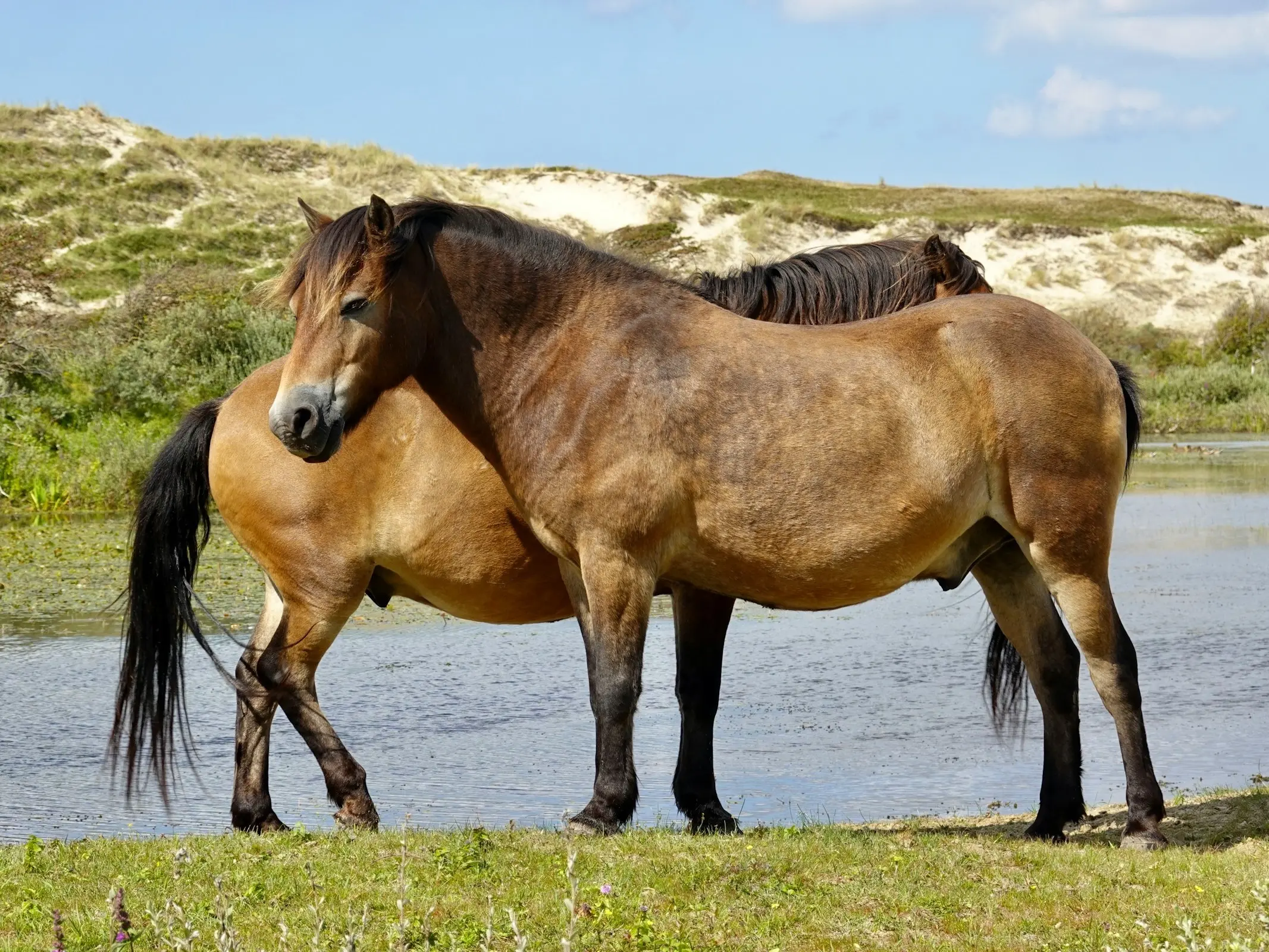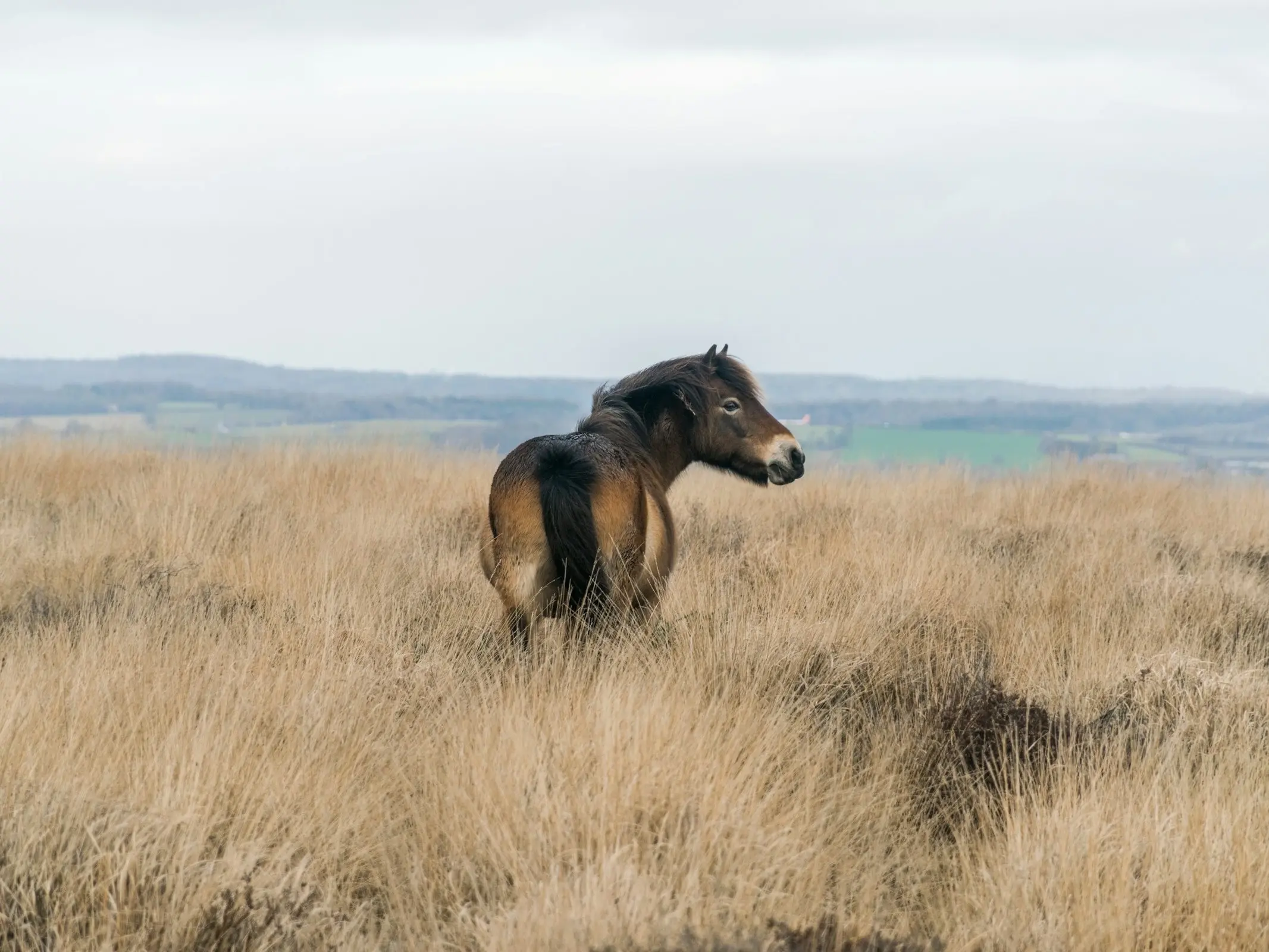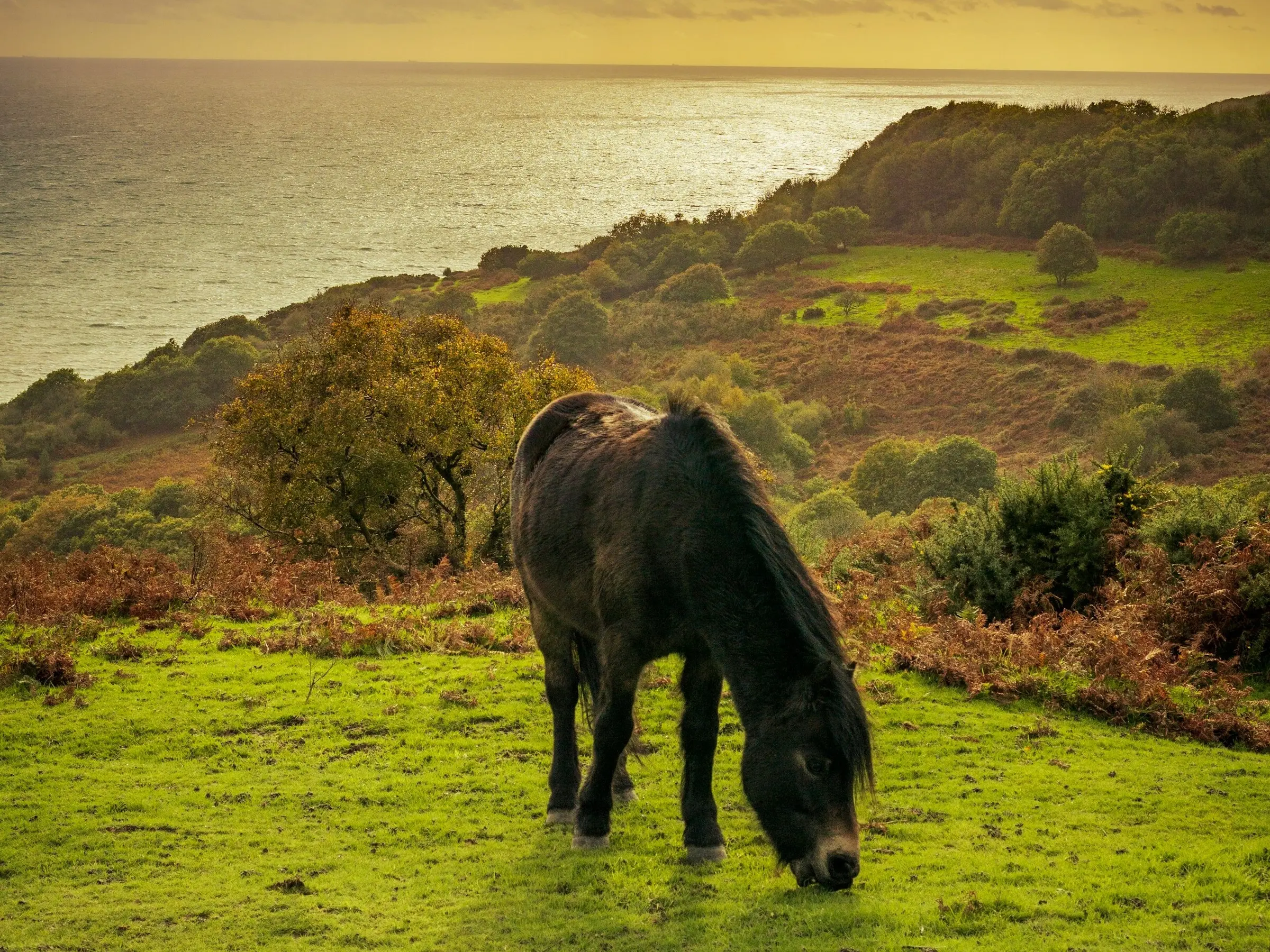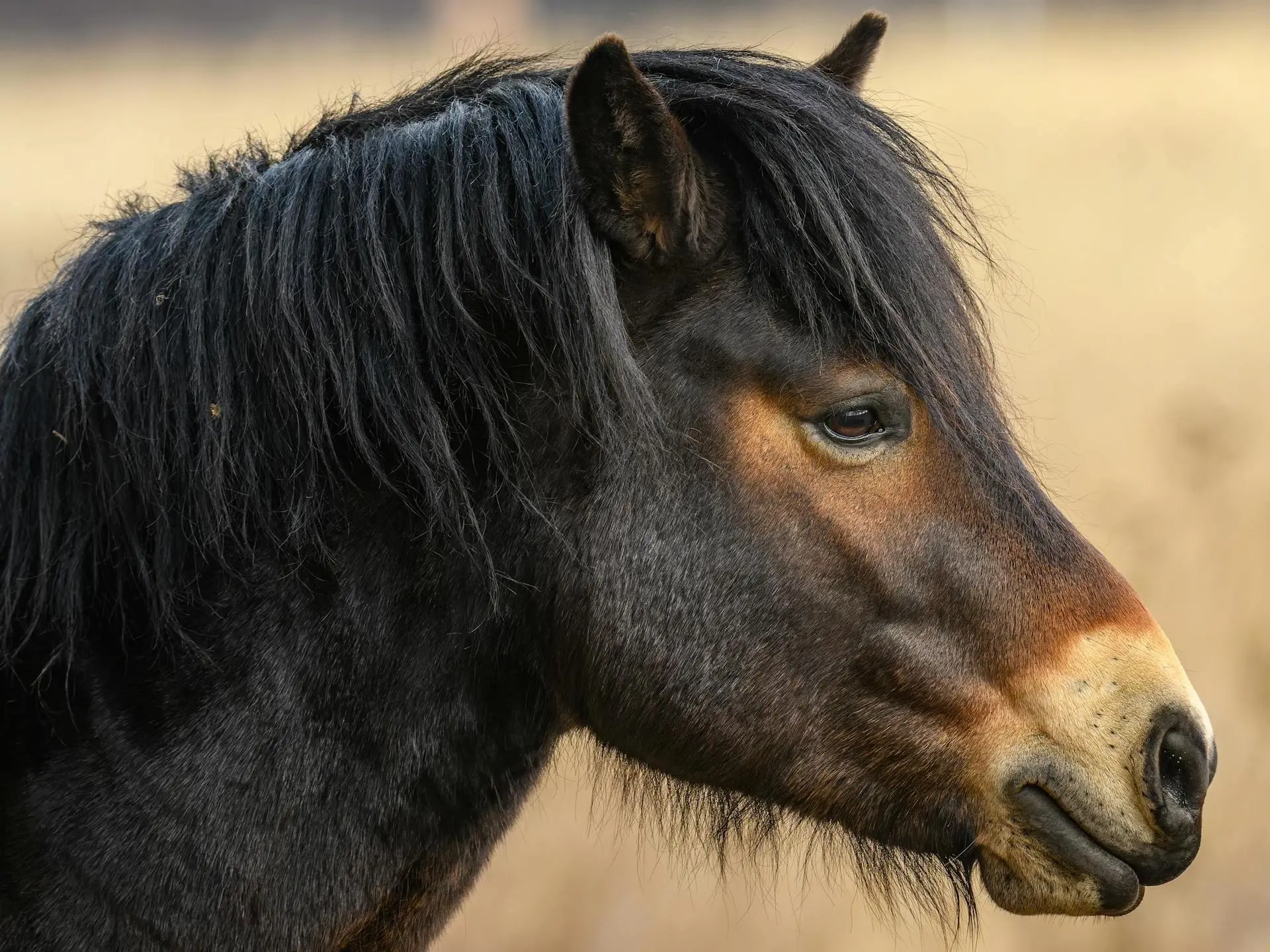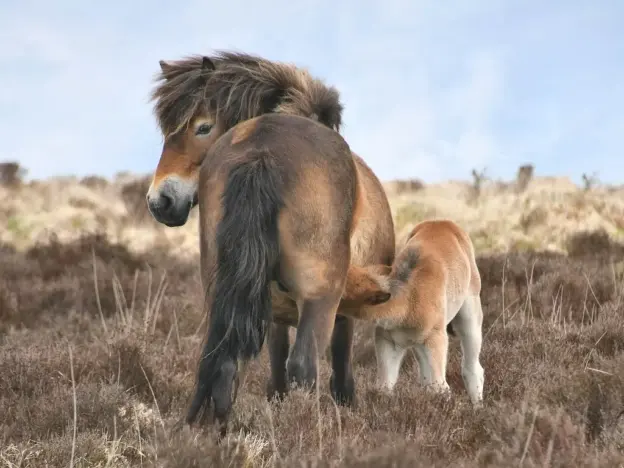Intro
A breed of great antiquity, the Exmoor is one of the few breeds that looks very much the same today as they always have. They are believed to be the oldest pure descendants of the ponies that inhabited Britain some 100,000 years ago.
Origins
The exact area of their origin is unknown, but evidence points to somewhere in North America. In fact, fossils show that an animal very similar to the Exmoor of today was widespread on a global level a million years ago. The belief is that some of these Animals were trapped in Alaska by ice barriers where they adapted to harsh weather and conditions.
Later the ponies crossed to the British Isles and roamed wild in pre-Celtic times where they were known to unsuccessfully cross with Celtic mares. Although no formal records were kept of their breeding, first mention of them was recorded in 1086.
Not much was said about them until 1818, when the last warden of the Exmoor Royal Forest drove 400 of the ponies to his own lands. Later this became known as the anchor herd and has been family owned ever since. The remaining ponies were sold off – some back to family breeders with a keen interest in preserving the line.
The Exmoor Pony Society was formed in 1921 with the intention of preserving and improving the breed, they produced their first studbook in 1963. Through their isolated and harsh location and the dedication of family breeders and conservationists, this breed has changed very little from the animal that has roamed the earth for thousands of years.
Although they are frequently (and successfully) domesticated, these ponies are still wild animals of the Moor. They are raised wild and rarely interfered with by humans, only when it is necessary for conservation of the bloodlines.
According to DAD-IS they are at risk and in 2021 there were only 95 left. The Equus Survival Trust lists them as critical.
Features
11.2 – 12.3 hands
Summer coat is sleek but winter coat is a double layer to insulate from the elements
Hooded-eye – a heavy upper brow to protect eyes from the elements
Snow-chute- a collection of short, thick hairs at the top of the tail designed to channel rain away from the body.
Physique
Head is short, thick and clean cut
Eyes are large, wide apart and well-defined
Neck is wide
Chest is deep and wide
Back is broad and level
Legs are clean and short
Feet are neat and hard
Traditional Colors
Dark bay or brown with mealy markings
White markings indicate impure breeding
Temperament
Are bright and even tempered
Quick and surefooted
Quick learners
Fantastic jumping ability
Use
Herding and agricultural use
Driving pony
Show pony
Long distance pony
Helpful Links
* All links open in a new window
Exmoor Pony Society
Exmoor Pony Centre
More Images
